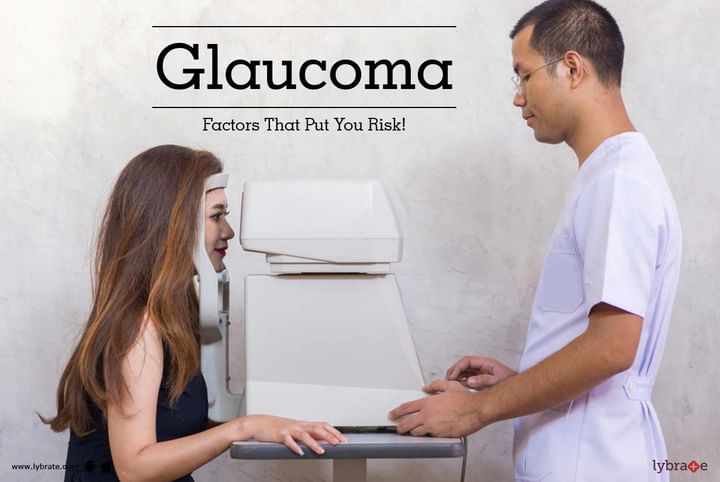Glaucoma - Factors That Put You Risk!
Glaucoma is a group of eye diseases characterised by damage to optic nerve usually due to excessively high intra ocular pressure (eye pressure). If left untreated can lead to optic nerve damage resulting in progressive, permanent vision loss. Glaucoma usually affects people above the age of 40, but can affect younger people as well. This condition causes fluid to build up in the eye, which puts pressure on the optic nerve.
There are broadly two types of glaucoma - Open angle glaucoma ( more common in elderly) and angle closure glaucoma.
Women are more likely to suffer from glaucoma than men are. Ethnicity also plays an important role in determining the risk of suffering from this condition. East Asian and African Americans have a high risk of glaucoma, as they have a shallow, anterior chamber depth. Some of the other conditions that can increase a person’s risk of glaucoma are:
- Diabetes
- Hypothyroidism
- Myopia
- An earlier eye surgery
- Retinal detachment
- Tumours
- Injury to the eye
- Long term corticosteroid medication
If diagnosed early enough, glaucoma can be treated and its effects can be reduced. However, the damage already caused by glaucoma cannot be reversed. The aim of glaucoma treatment is to either reduce the production of fluid in the eye or improve its flow. This helps slow down the progression of this disease and prevents any further loss of vision. Glaucoma treatment usually takes the form of eye drops or surgery.
Eye drops are the first step towards treating glaucoma. There are many different types of eye drops. Prostaglandin analogues aim at increasing the flow of fluid out of the eye and are usually prescribed in cases of swelling around the rim of the eyes, darkening of the iris and blurred vision. Beta-blockers can also help lower the secretion of fluids in the eye.
Patients who are also suffering from diabetes or lung conditions such as bronchitis may be prescribed cholinergic agents, carbonic anhydrase inhibitors or sympathomimetic drugs. Cholinergic agents help improve the outward flow of fluid in the eyes while Carbonic anhydrase inhibitors reduce fluid production in the eyes. Sympathomimetic drugs do both reduce the production of fluids and improve outflow.
If the eye drops are not effective, surgery may be advised to lower the pressure built up in the eye. Some of the common types of surgery for glaucoma are:
- Trabeculoplasty: This procedure involves directing a high-energy laser beam into the eye to open clogged drainage canals. The surgery has high success rates but the problem may recur after surgery.
- Filtering surgery: This involves creating an opening in the eye and removing a part of the trabecular meshwork, thus allowing fluid to flow outwards.
- Drainage implants: Children or patients with secondary glaucoma may be treated with this surgery where a small silicone tube is placed in the eye to aid in fluid drainage.
In case you have a concern or query you can always consult an expert & get answers to your questions!



+1.svg)
